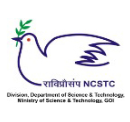High Level Policy Dialogue
On
Integrating Multi-stakeholder Actions for Building Back Biodiversity
Date – 20th May, 2024 Time – 14.30 HRS (IST) onwards
Platform – Virtual (ZOOM)
Webinar ID: 882 9602 7259
Passcode: 579782
To join the webinar: CLICK HERE
Introduction
Biodiversity decline have many common root causes: forest degradation and habitat fragmentation. The benefits and cost effectiveness of working with nature extends to other domains—including food and water security, and climate change. The impact of water management on aquatic ecosystems, wildlife, and biodiversity cannot be understated. As the world faces increasing water demands and environmental challenges, finding a balance between human needs and environmental conservation becomes a global imperative. To reduce future shocks and build societal resilience, we must focus on well-being and inclusiveness, and trigger investment and behaviour changes. But to achieve this, bold, interdependent actions are needed across several fronts—each of which is necessary and none sufficient on its own. Efforts to conserve and restore biodiversity, address climate change in ways that limit global temperature rise without imposing unintended pressures on biodiversity, and transform the way we produce, consume and trade goods and services that rely on and impact biodiversity must be increased. Unsustainable subsidies must be redirected into nature-positive incentives. The recently adopted Global Biodiversity Framework (GBF) includes a target to protect 30% of the planet’s land and seas by 2030; the Global Plastics Treaty which is legally binding—will include mandates around plastic environmental pollution and address marine biodiversity loss. Financial-related drivers also mean organisations will have to simultaneously consider how water scarcity and pollution, climate disruption and loss of nature will impact their business, and how their business is driving climate change and biodiversity loss. As organisations navigate pathways towards net-zero greenhouse gases (GHG)—while also adapting to the impacts of climate change—biodiversity and nature will inevitably have to become part of the plan, as well as part of risk assessment. Our commitment to a healthier planet includes stewardship of ecosystems through water management and biodiversity protection. Working to responsibly manage and reduce water use while engaging with various collaborators to support conservation and habitat restoration.
Objective:
The objective of this high level dialogue is to understand how incorporating a ‘Transversal’ shift interlinking vertical linkages between water-energy-food-biodiversity with horizontal linkages in climate and water-related policies shall need managing ecosystems, including agricultural and urban ecosystems, as well as the use of wildlife, through an integrated approach, to promote healthy ecosystems and healthy people. To explore the need to have a dialogue with diverse stakeholders for accelerating partnerships by engaging local communities, UN agencies, funding organizations, government and policymakers to analyse the effects on all stakeholders and sectors involved. This session will explore how we need to rethink partnerships and cooperation with our greatest allies in fixing biodiversity loss.
For more information please contact:
Ms. Shweta Tyagi
Chief Functionary
India Water Foundation
Email: [email protected]
Mobile No: +91-9899819074




